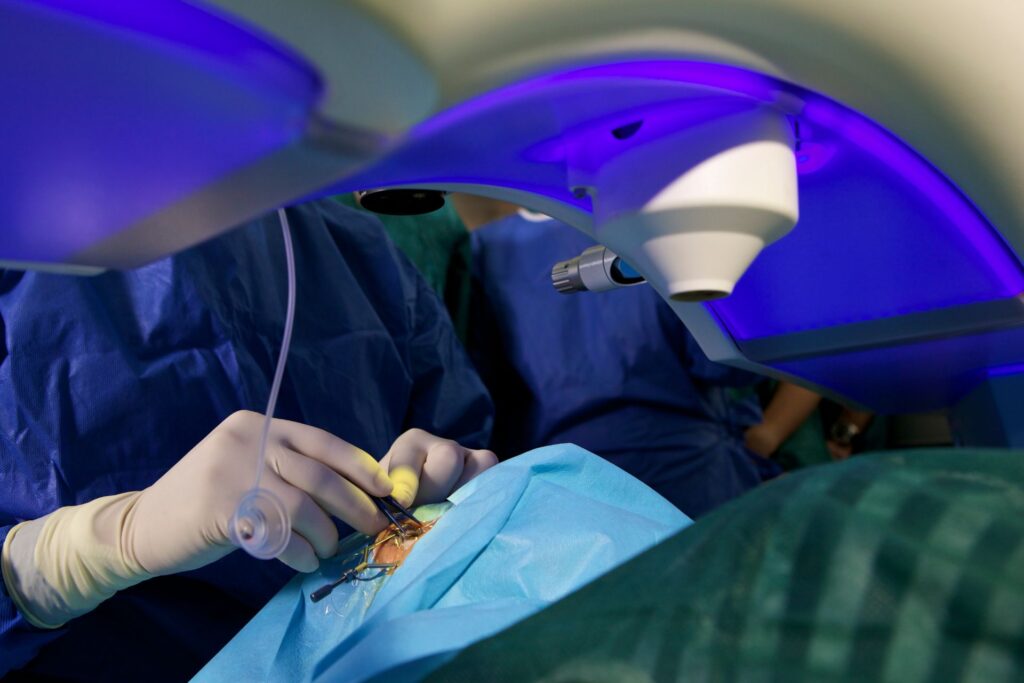Treatments
Laser refractive surgery

What is laser refractive surgery?
Within the array of treatment possibilities offered by refractive surgery, there are several techniques that are based on the use of high-precision lasers to “shape” the cornea (transparent layer that covers the front of the eye). The aim is to modify its curvature so that the light rays that fall on it can focus correctly on the retina, thus achieving clear vision.
At the Miranza clinics, we boast pioneering ophthalmologists who are experts in the use of these techniques, on which we will provide you with personalised advice, the main ones being:
- LASIK: It is the most widely used technique in the world and has proven its effectiveness for over 25 years. It consists of opening a small flap in the cornea using a surgical blade (microkeratome) and subsequently apply the excimer laser and shape the cornea. An evolution of this technique is the Femtolasik or Intralasik, with the variation that the first phase is not performed with a microkeratome but with the femtosecond laser, which provides even greater accuracy, speed and safety to the surgery.
- SMILE: This is one of the most recent and sophisticated laser refractive surgery techniques, characterised by being minimally invasive. Instead of lifting the surface of the cornea, with the femtosecond laser we carve an internal corneal sheet, which we extract through a microincision of just 2 mm.
- PRK: This is a procedure that acts on a superficial level, so it does not require access to the interior of the cornea. To do so, we remove its outermost layer (epithelium), which is then regenerated, and we shape the central part of the corneal tissue using the excimer laser.
Vision problems treated by laser refractive surgery
If you want to reduce your dependence on glasses or contact lenses, you may consider refractive surgery. The choice of one technique or another will depend not only on the type of refractive error you have and your number of dioptres, but also on other aspects, such as your age, prescription stability, corneal thickness, eye health, etc. Moreover, our specialists will take into account your specific visual needs, according to your work, hobbies and daily activities, to indicate the most suitable procedure for your case.
An expert and individualised surgical indication, based on a complete preliminary study, is essential to achieve maximum satisfaction with the procedure. If you are not a good candidate for laser refractive surgery, an alternative we can also offer you is the implantation of intraocular lenses.
Recovery
Laser refractive surgery has the advantage of being a very quick operation (around 10 minutes), which we perform under topical anaesthesia (drops) and will allow you to go home without the need for being admitted.
Depending on the technique used, it may take you more or less days to see completely clear. For example, in the case of LASIK, you will regain practically normal vision after 24 hours, whereas with PRK it will take about a week. The postoperative discomfort that you may notice will also disappear after 1-2 days in the first case, as well as between 3 and 5 in the second. Whatever the technique used, you will soon be able to go back to work, reading, using the computer and even doing sports. We will tell you in detail the treatment and postoperative precautions you must follow (for example, it is important to moisturise your eyes with artificial tears and avoid putting on make-up during the first few weeks) and evaluate your progress during the control visits.



